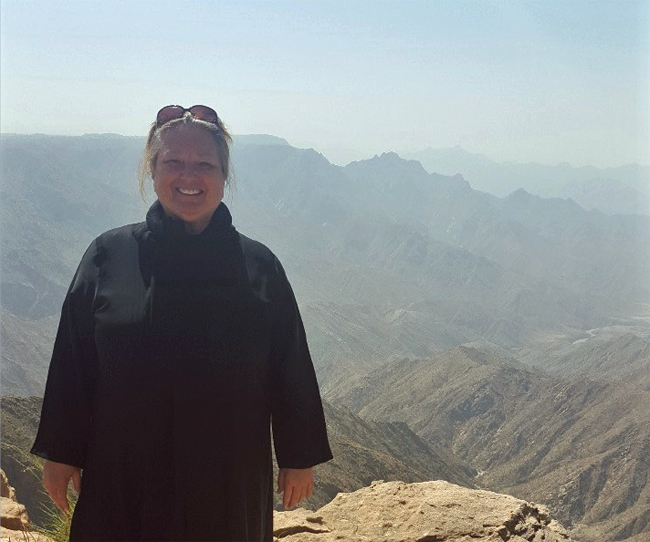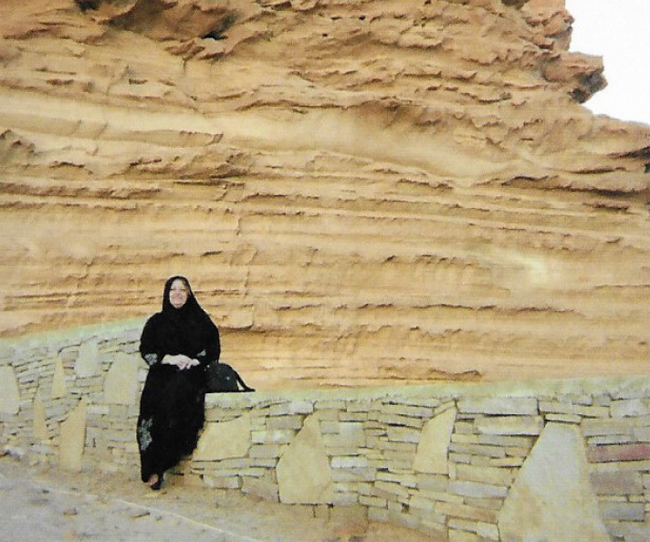
By Donna Marsh
 Saudi Arabia is taking the first steps in opening up the Kingdom to tourism. Most people have little practical knowledge about this fascinating destination. This is a good time to prepare for a future visit.
Saudi Arabia is taking the first steps in opening up the Kingdom to tourism. Most people have little practical knowledge about this fascinating destination. This is a good time to prepare for a future visit.
Who can visit?
Anyone who holds a passport from 49 approved countries is eligible for a tourist visa, which you must apply for in advance. Women do not need to travel with a male relative.
When should I go?
The best time to go is during the more clement months, which is between late October and mid-May. This is when it is still possible to go outside and most activities take place. Be aware of Islamic dates and holidays, which change every year. It is not fun for most people to visit during Ramadan, as most places are closed, Muslims are fasting, and non-Muslims are strictly expected to comply with the same rules in public, e.g. no eating, smoking, vaping, chewing gum, or drinking (including water).
How do I get there?
Saudia is the national airline. It is a dry airline which goes to multiple destinations in Europe, Asia, Africa, and a few cities in North America. Most European, Asian and Gulf airlines also fly to most major cities in Saudi Arabia. North Americans may find it practical to fly via Europe; others may prefer traveling via Dubai or Abu Dhabi. Please note that due to the Qatari embargo, it is not currently possible to fly to Saudi Arabia on Qatar Airways.
Where should I stay?
Most visitors feel more comfortable staying in relatively high-end hotels. Hotel staff are more used to hosting visitors and expatriates, especially women, in these venues. They can also provide a number of useful services such as transport.
Where should I visit once I’m there?
A good itinerary for first-time visitors often includes Jeddah (modern and more relaxed, also excellent scuba diving, UNESCO old city al Balad), Al Ula for Mada’in Saleh and the Tantora Festival as well as the old Hejaz railway, Tabuk region for stunning mountains, Asir Province for more stunning mountains and the attractions of al Habalah, Jebel Soudah, and a chance to see the indigenous hamadryas baboons. It is also worth visiting the capital city of Riyadh for contrast to Jeddah and to visit the World Heritage Site of Diriyah as well as al Masmak and other museums.
Saudis and visitors alike take part in Saudi Seasons activities and the Tantora Festival.
How do I get around?
It is possible for men and women to hire a vehicle at the airport if you are brave enough to drive, but some people prefer to hire a driver, which means you avoid responsibility if anything goes wrong.
There is very little public transport in Saudi Arabia, although the SAPTO bus system is an option for those simply wishing to travel intercity. Most people fly. Fly-nas is an established budget airline that works similarly to Easyjet or Southwest and is an alternative to Saudia.
Can I travel around the country on my own? Do you recommend a guide?
That’s up to you. You are very safe in Saudi Arabia as long as you do not offend. However, outside of the major cities and other places that cater to expatriates, people do not necessarily speak much English, so speaking a bit of Arabic helps a lot. A guide will help in these situations. It is also important to remember that tourism and customer service are both very new, so some guides will be better than others.
What should I know that’s different to what I’m used to, even if I’ve been elsewhere in the Middle East?
Although it is likely that some of these considerations will change or are indeed in the midst of change, they are still important for everyone to understand.
Family sections — until recently, most public spaces were gender segregated, including restaurants and shopping mall food courts. Although this is changing, please be mindful of complying if your choice of venue still enforces this rule.
Prayer times — all businesses, including shops, restaurants and most hotel services stop during prayer time, usually for up to 30 minutes. You will be expected to wait quietly until they reopen.
Places are closed in the afternoon, generally reopening a bit before sunset.
Most of Saudi operates later hours, e.g. when people go shopping or to restaurants.
People expecting to shop in souqs will be mostly disappointed as most Saudis in the big cities shop in Western-style shopping malls. People in service jobs are generally not Saudi nationals but are from the Indian subcontinent, the Philippines, or parts of Africa.
Install WhatsApp if you don’t already use it. This app is used by everyone.
What should I know so that I don’t get into any difficulties?
Saudi Arabia is new to tourism and is just learning about customer service that other parts of the world have had a long time to practice. Be patient.
Important links:
- https://visa.visitsaudi.com
- https://saudiseasons.com
- https://experiencealula.com/en/Winter_at_Tantora/Events/Pages/default.aspx
Enjoy your visit!
—Donna
Please read Info File #826: Saudi Arabia for more comprehensive information for anyone considering travel to Saudi Arabia. It is a must read.




